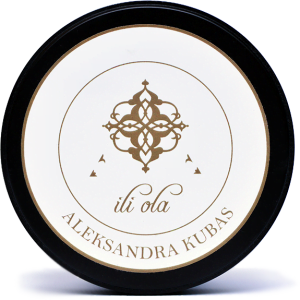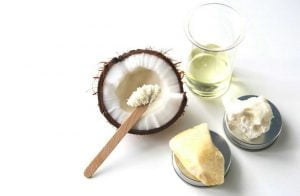Hybrid manicure when it can be harmful?
Do you like painting your nails?
Regardless of what sort of manicure you have chosen, you should get to know more about the safety of hybrid nail polishes, UV lamps, or acetone.
Ready to learn a little bit?
To start with, let me remark that any single cosmetic you treat or fingernails or toenails with is designed for healthy nail surfaces (plates) – so never use a polish, gel, acetone, or any other beautifier in case your brittle, splitting, cracking, or peeling-off nails cause you problems!
In any such case, you should visit your doctor rather than a beautician.
Once you have come to terms with the pathologies (if any) of your nail plates—and have not lost the will to have your nails coloured—then have a go for it! Yet, to make a wise choice, decide for yourself what it is that you are expecting, and what are the possible consequences you might find bearable. Let me hope that this article will provide you with all the answers you seek. ?
Question 1: Can a hybrid manicure put your health at risk?
Hybrid manicure will NOT be dangerous if properly made and if hygiene is observed. (Take note whether your manicurist’s workplace is kept clean and hygienic: it MUST be disinfected, the same holds true for any single thing she touches while working!) What is potentially detrimental in such manicure technique is its unskilful removal. Based on my experience, the best method to have a hybrid polish removed is to use a drill—obviously, in a way so as not to damage any of the nails, and very carefully. When removing the previous hybrid and intending to apply a new one, the base coat is not to be removed unless air-penetrated. Filing the nails down to the nub is a misconception: to apply everything anew, the nail ought to be matted rather than filed—otherwise the plate will be excessively thinned and when we decide to discontinue the hybrid manicuring once the previous hybrid layer was removed, the nail will be too weak, no longer capable of performing its protective function, with the result that your fingers might be aching when washing your hands, for instance.
After you apply the hybrid polish, it needs being hardened. Hybrid polishes owe their strength to the polymers. Polymers are compounds with long chains, which are hard to severe, and thus quite durable. Polymerisation is a reaction that occurs at high temperatures or pressures, or in presence of a catalyser. For polishes, the UV lamp is used as the catalyser.
Question 2: You have probably repeatedly read, or heard, that UV radiation emitted by the lamp is cancerogenic. Is it true?
The answer is, NO. ?
The radiation we are exposed to when applying hybrid manicure is too short to exert an adverse influence on our organism. The radiation is the UVA, identically as the one reaching us from the Sun; it influences us all year round, deeply penetrating and causing decomposition of collagen fibres – which means, aging of the skin. An examination carried out a few years ago has demonstrated that UV lamps are safer than a solarium or even driving a car on a sunny day. It was moreover found that the outer side of the hand is 3.5 times more radiation resistant than the skin on the back, and fourfold more resistant than that on the cheeks or forehead; the nail plate itself is a UV blocker comparable to sunscreen SP 40 and thus efficiently protects the nail bed. The study was done by by Dr. John Dowdy and Dr. Robert Sayre, both recognised as scientific leaders in UV radiation research. Associated with the University of Tennessee Health Science Center’s Department of Dermatology and the Department of Physics, University of Memphis, Dr. Sayre has invented the SPF evaluation system.
UVB radiation is dangerous. Reaching us in the summer, when overdosed, it causes erythema (redness) and can potentially cause, for instance, malignant melanoma (melanotic cancer); what it also does is synthesise vitamin D. As is evident, moderation is of paramount importance in this respect.
UV lamp would not damage the nail matrix (onychostroma), unless exerting a strong impact directly on your finger. Bear in mind that the matrix can be damaged mechanically, by biting the cuticles!
You have done your mani, but friends are telling you that your plate is not breathing! You should know, though, that the nail is a dead tissue which does not breathe at all. It is built of keratin and its job is to protect the fingertips. The nail plate will be healthy if you take good care of the nailfolds, bed, and matrix. Improper cutting out of cuticles, or biting them, may lead to infection, and sickness may affect the nail–something that applying the polish in line with the manufacturer’s instructions will never do!
Another problem is dryness. It is seemingly gnawing you after a long-time use of hybrid polishes. You will probably be taken by surprise again as you will find that it only seems so.
True, during your visit at the manicurist your nail will come into contact with acetone, for instance. A non-toxic solvent, acetone is classified as irritating substance. It irritates the skin and causes its flushing which, when applied for some time, resembles a burn. Tests performed to date (regrettably, on animals only) have shown that acetone causes no damage to the DNA and is not cancerogenic. If you disinfect your skin before doing the manicure, it gets dryer again. You have to bear in mind, though, that it is your personal habit that matter the most. Washing your hands with a soap, washing dishes without gloves, or even drying your hands without a towel instead of using it—all this makes your skin, as well as your nails, dry. This is why you need to apply a cream that will protect your skin against external factors such as wind or sunshine* (while washing your hands, you wash up the hydrolipidic protective layer of your skin together with the dirt!).
*The best cream to treat your dry skin is available at our retail outlet! ?

How about a regular polish, then?
Ordinary polishes contain solvents which make the polish applicable at all; the polish gets hardened on the plate once the solvent volatiles (dries). Such polishes should be used in an airy room. A regular polish is washable using an acetone-free solvent. Yet, such a solvent will also dry your skin and the nail plate.
Solvents contained in polishes are examined and tested on an ongoing basis; some have already been withdrawn, or severely restricted in the market. Solvents are volatile substances. They get quickly absorbed into the organism through the respiratory tracts or the skin, and are metabolised in the liver. If you observe moderate frequency and remember to air the room in which you paint your nails, everything is going to be all right (assuming that your liver is sound….).
As a general remark, avoid painting your nails in presence of children and pregnant women.
This article owes a lot to the published scientific-research outputs, available at www.pubmed.com. The website contains numerous research reports by the aforementioned scholars. I have found no publication that would confirm a detrimental action of hybrid polishes or UV lamp.
Always ask, and expect the answer! Should you have ANY questions, just write to me so that I can reply. I will certainly be back with you! ? [a.kubas@iliola.com.pl]
Take care about yourself!
Aleksandra Kubas




